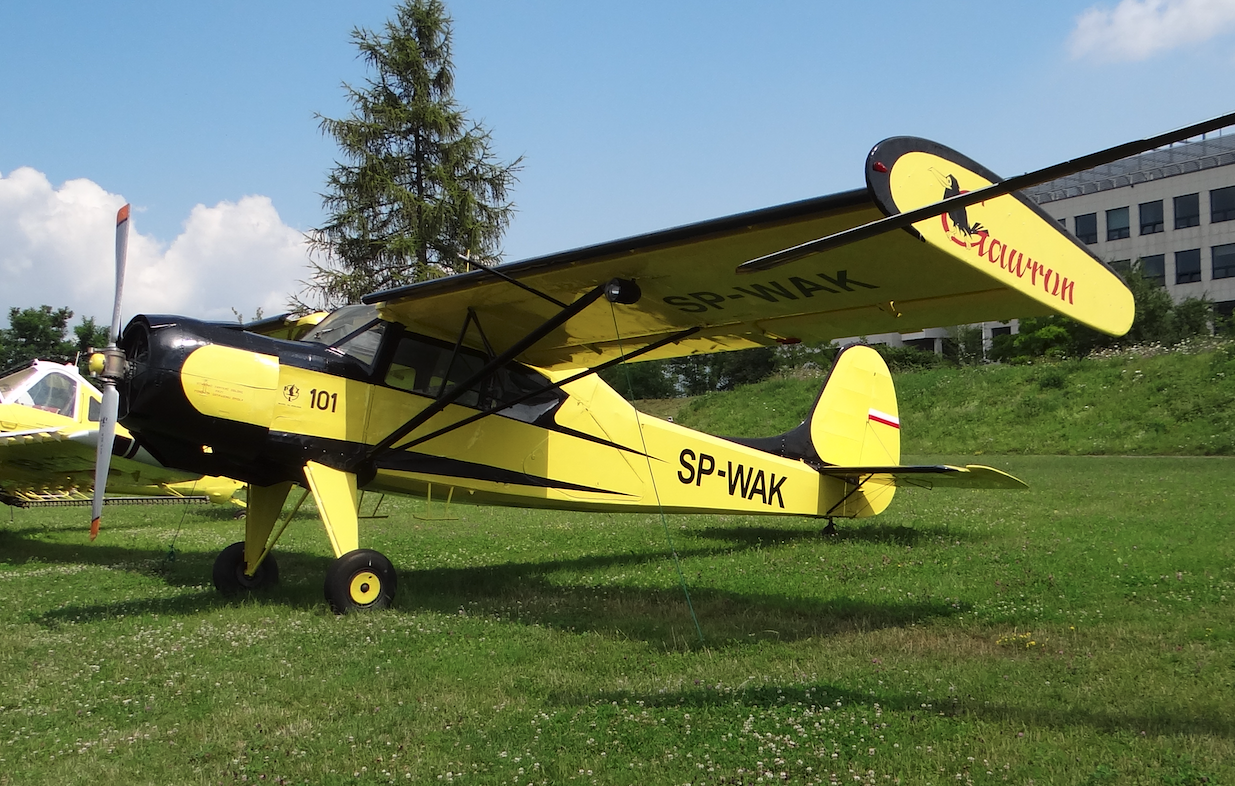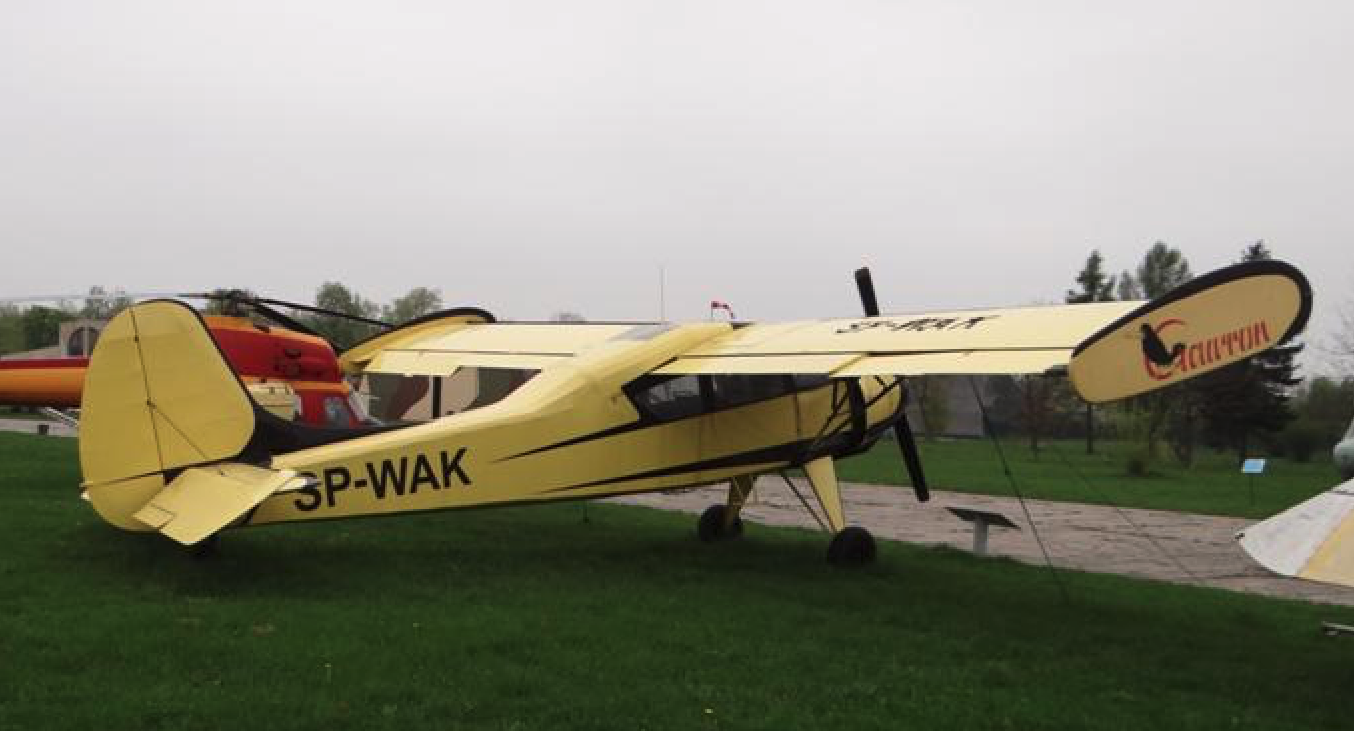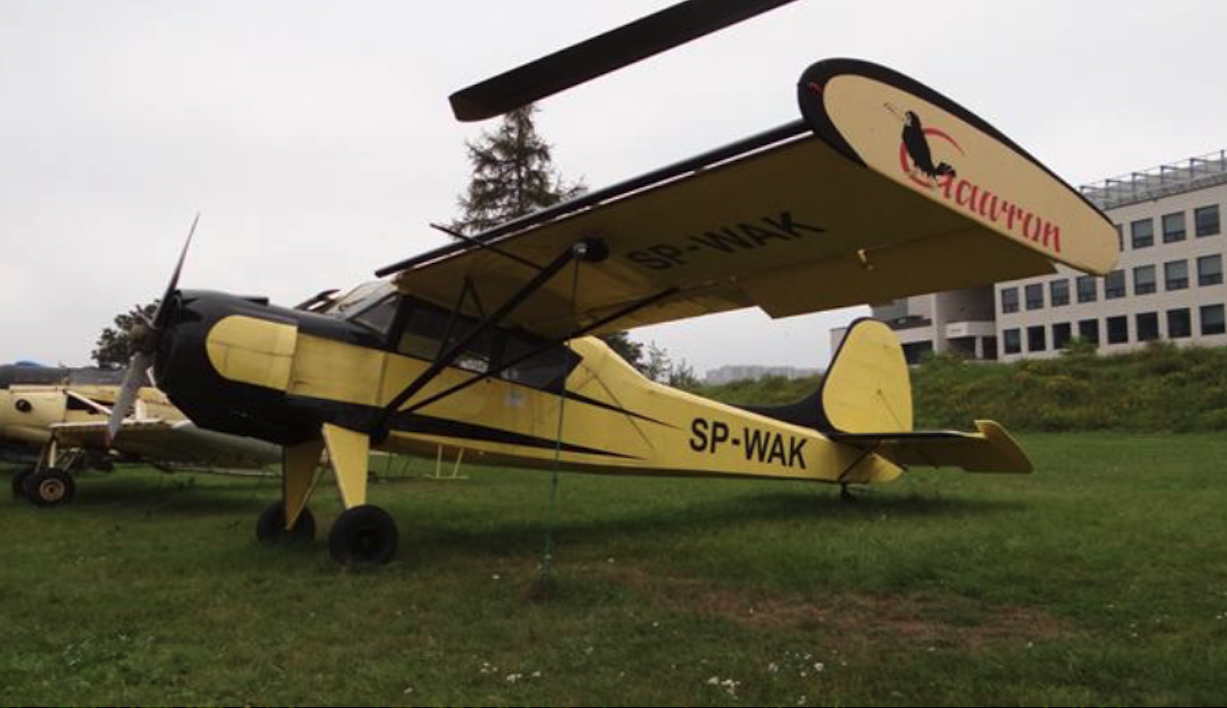Kraków 2014-04-02
145b Section 1958-05-14
WSK Nr 4 PZL Okęcie PZL-101 Gawron
Poland
Agricultural plane.
History



On the basis of the Jak-12 M aircraft, it was decided to build an agricultural aircraft. The case was difficult, because the Jak-12 had a lifting capacity of only 350 kg, with a maximum volume of 470 liters. The constructors realized that this solution was provisional and it would be necessary to build a typical agricultural plane. However, at the moment, the team under the supervision of M.Sc. Stanisław Lassota in 1956 has started working on the agricultural version. In 1957, the documentation was ready.
The designers primarily tried to reduce the curb weight of the aircraft. The plane was deprived of a radiocompass, radio station, adjustable engine cover, the right door was removed. The right seat was replaced with a light seat. As for the radio, it was reinstalled during its operation. The performed static tests showed that it was possible to increase the total weight max from 1,450 kg to 1,600 kg. On the back, behind the wings, a distinct hump has been added, which has increased room for a chemical tank. On the top of the hump there is a hatch for pouring chemicals. The capacity of the tank was 800 liters and the lifting capacity was 500 kg. The tank was intended only for loose chemicals. It was filled manually with the use of buckets. A makeshift (wooden) pier was erected, on which the worker with the bucket would climb onto the plane's back and pour chemicals into the tank. At the bottom of the tank there is a dosing device, which is powered by an additional propeller located on the back of the hull. Chemicals fall out in small portions. The quality of dusting depends on the direction and strength of the wind.
Written by Karol Placha Hetman
Kraków 2014-04-02
145b Section 1958-05-14
WSK Nr 4 PZL Okęcie PZL-101 Gawron
Poland
Agricultural plane.
Construction

PZL-101 is an agricultural aircraft, single-engine, high-strut wing, metal structure, covered with duralumin sheet, 0.4-1.0 mm thick, and canvas.
Wings.
The PZL-101 Gawron planes received rectangular wings and fixed gills (slots) on the leading edge. At the ends of the airfoils, it received large aerodynamic blades (edge plates). The wings have a bevel of 4 degrees. After the conversion from the agricultural version to the multi-purpose version, the edge plates were often dismantled.
The fuselage.
The fuselage of the truss structure, made of 30HGSA steel pipes. They are profiled with duralumin stringers. The front part of the fuselage is covered with D16A-T duralumin sheet. The back is covered with AM-100 natural or synthetic canvas. The fuselage begins with a firewall made of steel sheet. The bed is attached to this partition, and the engine to it. Access to the hull is provided by doors on both sides. They have an emergency dump system. The windows are made of organic glass. The PZL-101 Gawron received a raised ridge, which created a slight hump and significantly increased the space in the cabin. The walls of the cabin are upholstered. There are four seats in the cabin; two seats in the front and a couch in the back. The front seat backrests tilt forward to facilitate rear seat occupancy. Behind the cabin there is a trunk, which can be accessed through a door mounted on the left side. Radio equipment was also placed here.
Tail.
Classic tail with the division into rudders and fins. The rudders are equipped with balancing flaps. Rudder controlled 25 degrees to both sides. The elevator tilts 30 degrees up and 20 degrees down.
Chassis.
Fixed landing gear, classic, with a tail wheel.
Engine.
9-cylinder AI-14 R engine with a nominal power of 220 HP (161 kW) and a starting power of 260 HP (191 kW). The engines were produced in Kalisz in PZL-Kalisz under the designation PZL AI-14R. Air cooled. Air flow regulated by a shutter. The engine is covered with a two-piece cover (upper section and lower section). Adjustable pitch two-blade propeller. Spans up to 2.70 m.
Data T-T PZL-101 Gawron:
Span 12.68 m
Length 9.00 m
Height 3.12 m
Curb weight 1,050 kg
Gross weight is 1,600 kg
Load weight 600 kg
Fuel supply 225 liters
Top speed 180 km / h
Cruising speed 160 km / h
Rate of climb 3 m / s
Landing speed 85 km / h
The maximum range is 1,100 km
Range with a load of 250 km
Flight time 3 hours
The ceiling is 4,000 m
Run up 150 m
Landing 90 m
Written by Karol Placha Hetman
Kraków 2014-04-02
145b Section 1958-05-14
WSK Nr 4 PZL Okęcie PZL-101 Gawron
Poland
Agricultural plane.
Tally
The PZL-101 Gawron plane. Agricultural. The first flight on May 14, 1958, of the SP-PAG prototype, with the pilot Mieczysław Miłosz.
PZL-101 Gawron aircraft. Agricultural. Mass production in the period 1958-1962. 61 aircraft were built.
PZL-101 A Gawron planes. Agricultural. Mass production in the period 1962-1965. 264 aircraft were built.
PZL-101 B Gawron planes. Disposable. Mass production in the period 1965-1968. 78 planes were built.
Written by Karol Placha Hetman
